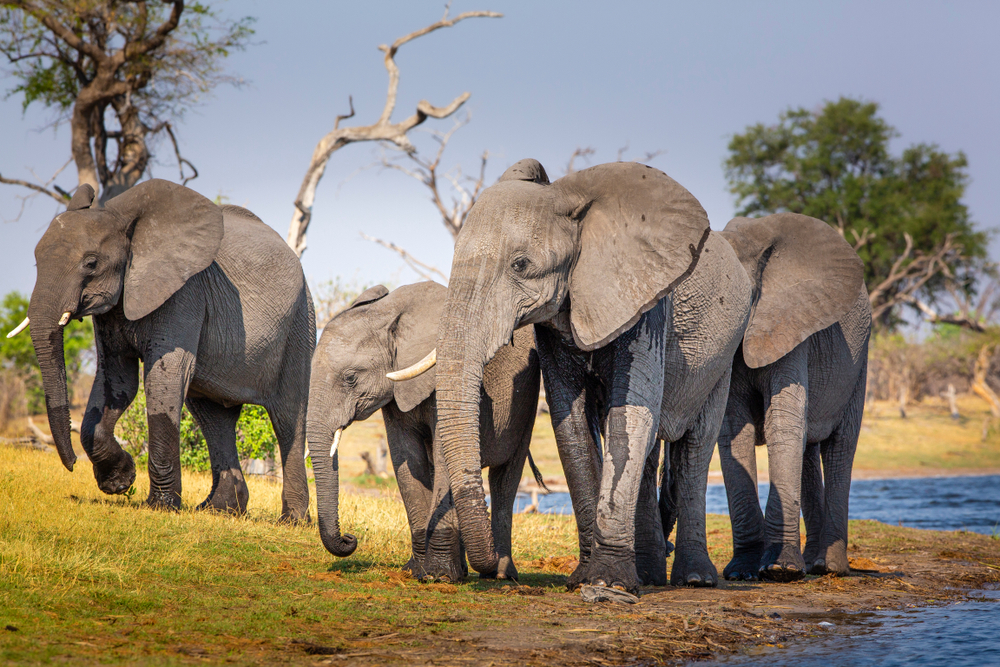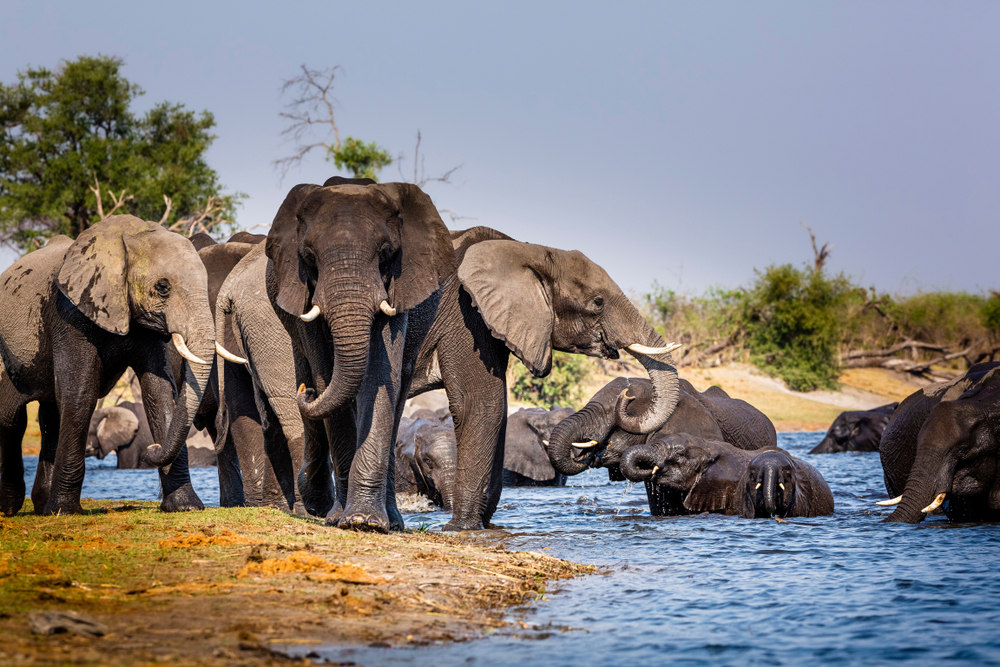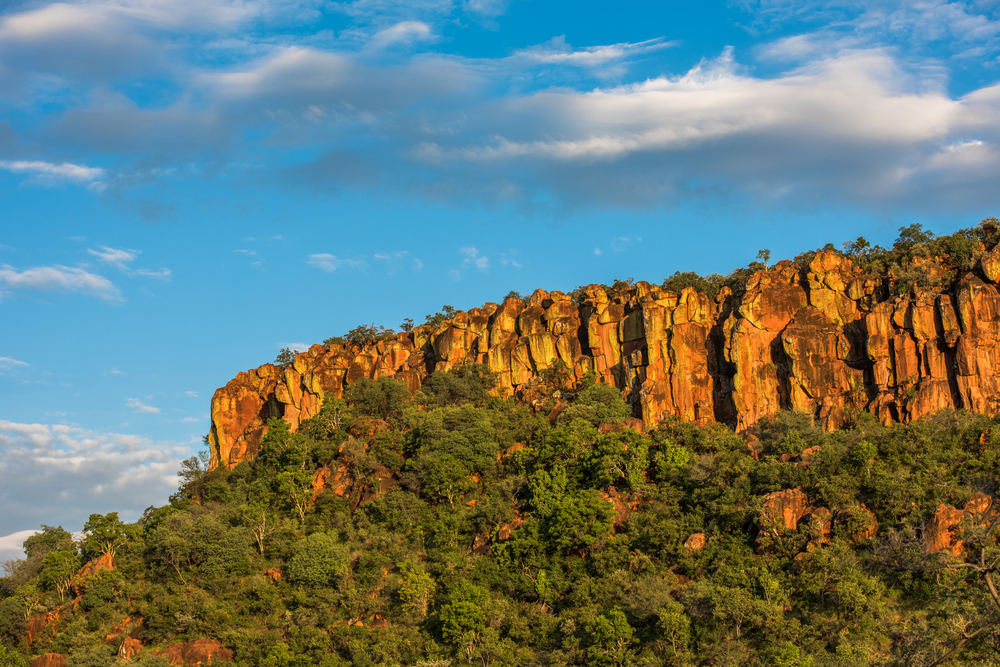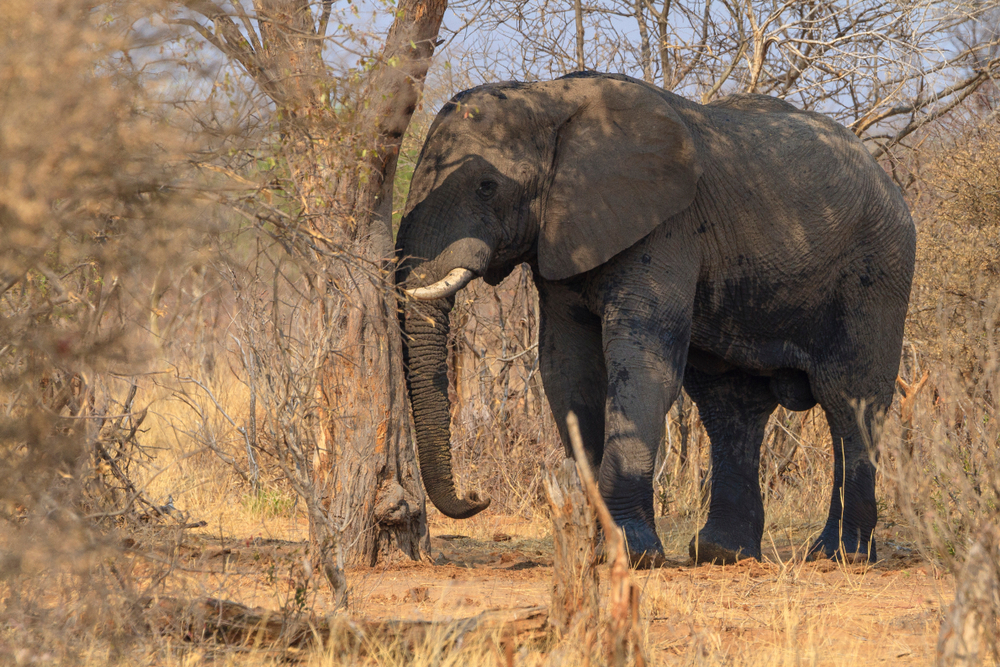Khaudum Overview
Khaudum National Park, located in the northeastern corner of Namibia, near the border with Botswana, is one of the country’s most remote and least explored conservation areas. Established in 1989, the park covers an area of approximately 3,842 square kilometers (1,484 square miles), characterized by its dense sandveld bushland, which provides a stark contrast to the country’s more famous desert landscapes. This remote wilderness offers an authentic African safari experience, far from the well-trodden tourist paths, making it a haven for those seeking solitude and a connection with the untamed natural world.
Khaudum is renowned for its significant wildlife populations, despite the challenging environment. The park serves as a critical sanctuary for several endangered and endemic species, including African wild dogs, roan antelopes, and elephants, which migrate through the park as part of their natural movements within the Kavango-Zambezi Transfrontier Conservation Area. Additionally, Khaudum’s diverse habitats support a wealth of birdlife, with over 320 recorded bird species, making it a birdwatcher’s paradise.
The park’s landscape is dominated by Kalahari woodland, dotted with seasonal pans that attract wildlife, especially during the rainy season when the pans fill with water. These ephemeral water sources become focal points for game viewing, as animals gather to drink and forage.
Access to Khaudum National Park is challenging, with deep sand tracks requiring a 4×4 vehicle, making it an adventure in itself. The park’s basic infrastructure, with few marked roads and limited facilities, emphasizes self-reliance and a true wilderness experience. Visitors can stay at rustic campsites located near waterholes, offering unique opportunities for wildlife observation.
Khaudum National Park’s isolation and raw beauty make it a unique destination within Namibia, appealing to adventurous travelers seeking to explore one of Africa’s last true wilderness areas. Its commitment to conservation and the preservation of natural habitats ensures that it remains a sanctuary for wildlife and a testament to Namibia’s natural heritage.
Park Map
Khaudum National Park Highlights
Engaging Khaudum
Khaudum National Park Trails
Sources
- Info Namibia, Khaudum National Park, https://www.info-namibia.com/accommodation/omaheke/khaudum-campsite, retrieved March 2024.
- Ministry of Environment, Khaudum National Park, http://www.met.gov.na/national-parks/khaudum-national-park/220/, retrieved March 2024.
- NACSO, Khaudum National Park, http://www.nacso.org.na/national-parks/khaudum-national-park, retrieved March 2024.
- Namibia Tourism, Khaudum National Park, https://www.namibiatourism.com.na/blog/discover-the-khaudum-national-park, retrieved March 2024.
- Sun Safaris, Khaudum National Park, https://www.sunsafaris.com/safari/namibia/khaudum-national-park/, retrieved March 2024.
- Travel News Namibia, Khaudum National Park, https://www.travelnewsnamibia.com/news/stories/featured-stories/khaudum-national-park-2/, retrieved March 2024.
























































































